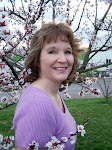
If you delight in fruity minty fragrance and the sight of hummingbirds hovering above brilliant tubular blossoms, try your hand at growing bee balm. This Native American herb, also called wild bergamot and Monarda, is available in crimson, pink and purple flowers. As its name suggests, bee balm is attractive to honey bees. Butterflies also favor it. The red variety is commonly known as Oswego Tea and was used by colonists in place of English Tea after the Boston Tea Party, when they threw the English tea in the harbor to protest the tax imposed on it by the British.
To make a cup of tea, place a tablespoon of fresh or one teaspoon of dried bee balm leaves in a tea strainer or tea spoon and pour one cup of boiling water over it. Allow it to steep for ten minutes and bring the tea out. Sweeten if you wish and enjoy. The leaves can be chopped and added to salads. Flowers can also be used for tea or salads, but in my thinking that’s just wrong.
Bee Balm has a long history of medicinal use by American Indians and settlers, primarily for stomach and bronchial ailments, and is the source for the antiseptic derivative called Thymol. I haven’t used the plant medicinally, but enjoy its beauty and delicious scent in the garden. Hummingbirds appear without fail when my patch of bee balm thrives. Recent droughts have hurt it, so this year I’m setting out yet more starts of this invaluable herb.
You can grow bee balm in among other plants, but take care that it isn’t crowded out, a mistake I’ve made. And it’s susceptible to mildew, so sunshine and good air circulation are important. Some recommended companion plants for bee balm are: purple coneflower (Echinacea purpurea), black eyed Susan (Rudbeckia), and lavender (Lavandula).
Translate
Pamela Varnado

Blog Archive
-
▼
2009
(406)
-
▼
April
(34)
- April 30th: A Day to Participate in a Miracle
- RHUBARB PUDDING
- Fast Draft
- Breaking Up Is So Hard to Do
- BACK from RT Convention
- Cheesy male torsos
- Dr. Wilson Snipes: He made me Think
- Joanne--Deal of the Day
- Joanne--Deal of the day
- New Ohio Roller Coaster Ride
- Joanne--Food deals of the day
- Joanne--Deal of the Day (Actually 2)
- WINNER WINNER
- Joanne- Recipe--Oatmeal cookies
- 800-year-old General Versus Earthwoman: Who will ...
- Author Interview with Susan Shay
- Book Winners
- Characters with Two Faces (or more!)
- Black Lace:Seductions - HEAT WARNING
- Book Review - All of Me by Lori Wilde
- When is a Sandwich not a Sandwich?
- HAPPY EASTER!
- Civil War History at its Worst
- Helen Hardt blogs for the PFS, we have hunks here!
- Have You Seen This Man?
- Karen Kendall Visits for the Day!
- FYI winners!
- (Book Review) No Limits - By Alison Kent
- Travelling in Third World Countries - Part 4 - the...
- A Tisket A Tasket, Put Romance in Your Basket
- Welcoming award-winning romance author, Nina Pierc...
- Intermezzo - an excerpt
- A Leap of Faith!
- Try Your Hand at Growing Bee Balm This Spring
-
▼
April
(34)
.
..........
The Pink Fuzzy Slipper Writers © 2008. Free Blogspot Templates Sponsored by: Tutorial87











Thanks for the tip, Beth!
Beth, I sure like the flower. You have my deepest admiration for growing beautiful useful plants. Even when I had a huge backyard I managed to kill every flower or plant I touched. Green thumb and me are at opposite ends.
My mom used to use Bee Baum and grew it all over her garden in Vermont.
I love to grow plants. The only complaint I have, Is that here in Florida where I live, you can only grow subtropicals. Or What can stand the heat.
Growing any kind of flower is very rewarding, isn't it?
You know, I've always heard of Bee Balm, but I had no idea what it was. I didn't even know it was a plant!
It's something I've never tried to grow. I'll look for it the next time I'm looking for something to plant.
Beth, you've sold me. We won't start planting flowers until after memorial day, but I'll try this. I'll make tea out of it, too.
Beth,
Lovely picture! Thanks for sharing. Is this an annual or does it return? I have rosemary that has been growing for about 10 years now! Would love to add this to my herb garden. The tea sounds interesting as well.
Scarlet Pumpernickel
I'll need to check that out. Most of what I plant must be stubborn to live long.
Thanks for the lovely comments.
Bee Balm is a perennial.
Great article. I love to see little hummers in the garden. Don't know about Florida but we had plenty of them in Georgia.
I love these posts from Beth's wealth of knowledge about plants. I might try to plant some bee balm but I have a black thumb. So wish the plants luck.
Please tell me how early in the spring we can put out Bee Balm plants. Do we need to wait until after the last frost? thank you.